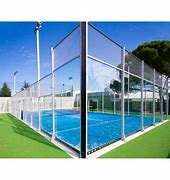

The Rise of Racquetball and Squash in China
In recent years, racquetball and squash have been experiencing a notable surge in popularity in China. With the country's growing interest in health, fitness, and international sports, these racquet sports are slowly making their mark, providing both recreational and competitive opportunities for players of all ages. This article explores the evolution of racquetball and squash in China, examining the factors driving their growth and the implications for the future of these sports.
Historical Context
Racquetball originated in the United States in the 1960s, while squash has roots that trace back to 19th century England. As global sports, both have traditionally been more popular in Western countries. In China, however, the introduction of the National Fitness program and the country's opening up to international sports have created an environment conducive to the growth of racquet sports.
In the early 2000s, China began to see an increase in squash courts, particularly in major cities like Beijing, Shanghai, and Guangzhou. Initially, these sports attracted a niche audience, often limited to expatriates and affluent locals. However, with increasing awareness and interest, racquetball and squash have moved into the mainstream, becoming accessible to a broader demographic.
Factors Driving Growth
Several factors have contributed to the rising popularity of racquetball and squash in China
1. Health and Fitness Trends As urban populations become more health-conscious, there's been a push towards activities that combine fitness with fun. Racquetball and squash offer an excellent workout, promoting cardiovascular health, agility, and strength, all in a dynamic environment.

2. Government Support China’s government has prioritized sports development as part of its broader national strategy. Initiatives to improve sports infrastructure and promote a healthy lifestyle have led to increased funding for sports facilities, including squash and racquetball courts.
3. International Events The hosting of international squash and racquetball competitions in China has helped to elevate the profile of these sports. Events not only attract local spectators but also inspire young athletes to take up these sports. Interaction with international players and coaches provides invaluable exposure and learning opportunities.
4. Growing Accessibility With more clubs and sports centers adding racquetball and squash courts, these sports are becoming more accessible to the general populace. Many health clubs and universities now offer programs for beginners, making it easier for newcomers to learn and engage with the sports.
5. Community and Social Aspects Racquetball and squash are not just sports; they are also social activities. Many players enjoy the camaraderie of participating in leagues, tournaments, and casual games. This community aspect encourages longer-term participation and fosters friendships, making these sports appealing.
Future Prospects
Looking forward, the future of racquetball and squash in China appears promising. As awareness continues to grow and facilities expand, the participation rates are expected to rise. The development of grassroots programs, especially targeting school-aged children, could yield a new generation of players who pursue these sports competitively.
Additionally, as sports tourism becomes increasingly popular, China may attract international tournaments, further promoting squash and racquetball on the global stage. As Chinese players gain recognition, there is potential for the development of a national team, which could compete in international events, bolstering national pride and interest in these sports.
In conclusion, racquetball and squash are well on their way to establishing a solid foothold in China. With health consciousness on the rise, government support increasing, and community interest growing, these sports are poised for a bright future. As they gain popularity, they could contribute not only to the fitness of the population but also to cultural exchange and international sportsmanship. Embracing such sports can lead to healthier lifestyles and a more vibrant sporting culture in China.
Premium Rubber Composite Flooring - Durable & Anti-Slip for Safety
Durable & Slip-Resistant Industrial Flooring for Squash Courts & Factories
Premium Rubber Floor Mats Durable, Non-Slip & Easy Clean
Premium Rubber Composite Flooring Durable & Eco-Friendly
Premium Rubber Composite Floor Durable & Slip-Resistant
Durable Industrial Flooring Solutions for Factories Expert Installation